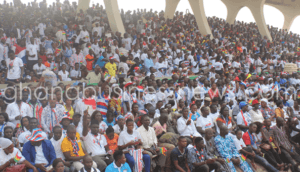World’s poorest countries need $125b annually to reduce poverty – ODI
The world has been battling poverty, and efforts are being made in different economies to reduce inequality, but those efforts won’t yield desired outcomes in the required funding gaps are not met, especially in some of the world’s poorest countries.
A new report says some of the world’s poorest countries currently have a funding gap of $125 billion each year to address poverty reduction.
The report by the London-based think tank, Overseas Development Institute (ODI) on financing extreme poverty says this funding gap exists in health, education and social protection, which are crucial for reducing poverty.
“Although increased taxation could close this gap in most middle-income countries, low-income countries will remain reliant on aid to fund these social sectors,” the report says.
According to the report, the world is not on track to end extreme poverty by 2030 as 29 countries including Central Africa Republic, Somalia, Madagascar, Burundi, Chad, DR Congo, Sierra Leone, Guinea-Bissau, Niger, Eritrea, South Sudan, Uganda, Mozambique, Mali, Burkina Faso, Comoros, Benin, Togo, Malawi, Liberia, the Gambia, Rwanda, Zambia, Tanzania, Guinea and Senegal are unable to raise even half of the investment needed in health, education and social protection.
“The poverty rate in these 29 countries is predicted to be seven times higher yet they currently receive ten times less in aid,” the report indicated.
In 2015, leaders of all countries committed to ‘eradicate extreme poverty for all people everywhere’ by 2030. In the past 25 years, according to the World Bank the world has managed to halve the number of people living in extreme poverty.
“Yet despite this progress, it is estimated that at least 400 million people will still be living on less than $1.90 a day by 2030 – over half of these people will be in low-income, fragile countries,” the report stated.
The report doesn’t just pinpoint the challenges, it also presents key findings and analysis on what needs to be done so that the global target to end extreme poverty by 2030 can be delivered.
It recommends that aid should be directed to countries that are least able to finance their own public spending to end extreme poverty, even after maximising their tax revenues, with OECD DAC donors increasing their share of aid to least developed countries from 29 per cent to 50 per cent.
It also recommends that funding should be increased in these countries for the core social sectors of health, education and particularly social protection. It further recommends an increase in global aid from OECD DAC donors to meet the 0.7 per cent of GNI commitment.
The report identified the following countries, Ireland, Belgium and Norway as the three major donor countries with the highest efficiency when it comes to aid. Australia, Korea and Japan scored less than 20 per cent efficiency, making them the three least efficient donors, it said.
By Emmanuel K. Dogbevi & Bismark Elorm Addo
Copyright ©2018 by Creative Imaginations Publicity
All rights reserved. This news item or any portion thereof may not be reproduced or used in any manner whatsoever without the express written permission of the publisher except for the use of brief quotations in reviews.

